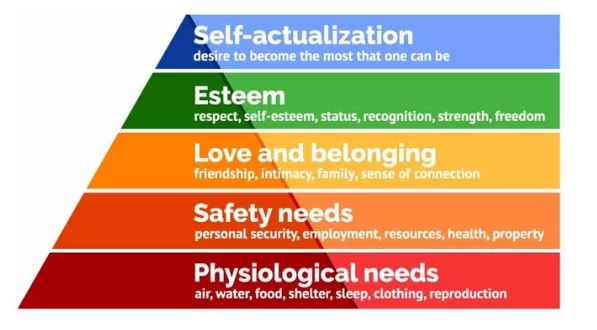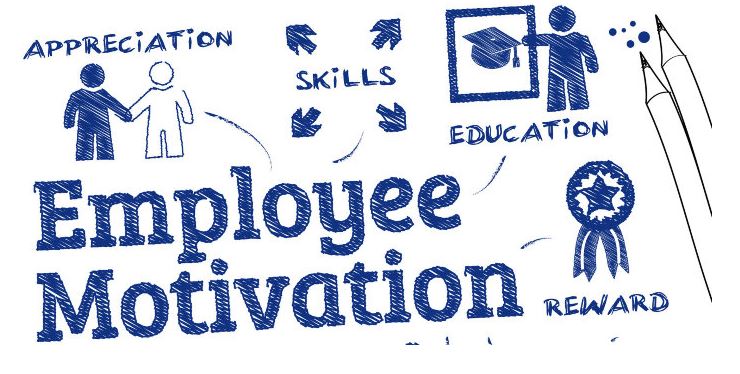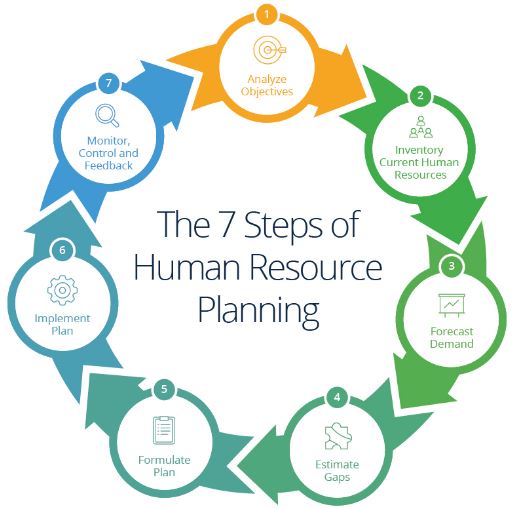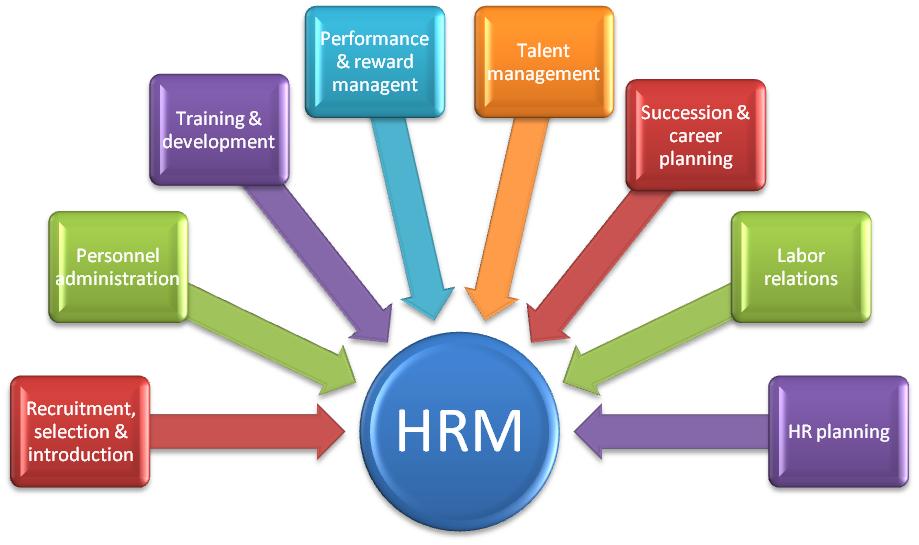Employees Emotions Management – An Introduction
Emotions of employees play a great role in the business processes and activities of the organization and therefore they need to be taken care of. Prior these emotions would be assumed to be job satisfaction and employee’s well-being related and managers would look for a way of sorting that out, but currently there is a lot be done about them. These includes managers identifying the emotion, determining the cause of the emotion, examining respective challenges in the quest to manage the emotion, and determine the expected measures required to manage that emotion for the good of the organization activities. In this paper, we are going to discuss different employees’ emotions at their workplaces, the causes, and different ways in which managers can manage those emotions.
As human beings, emotions are part of us and differ according to the nature of conditions we are in. Emotions create social bonds, examine them, and uphold them. Thus social movements, conflicts, and social changes are determined by our emotions. In the workplace, these emotions determine how the organization fraternity communicates within and to the outsiders such customers, the government, and the stakeholders. Usually, emotions are classified to two, namely; behavioral and attitudinal. These two can be generally said to be either positive or negative emotions and they both have a substantial impact on the performance of the organizations.
Actually, positive emotions in the workplace mostly bring favorable outcomes from the employees. Consequently, negative emotions among the employees such as stress, anger, sadness, and fear in most case results to poor performance in the workplace and also influences negative views on the organization from the outsiders. For instance, consider an employee who is frustrated and now he/she is full of negativity, he/she would give a negative judgment to even good news that an organization may have received. Hence employees’ emotions have a great impact on decision making, respective job performance, creativity, improvements, turnover, management, negotiations, and teamwork (Neal & Catherine 2002).
Researchers have really worked on employee’s emotions and how they are to be managed because of their effects on the performance of the business organization (Harter, Schmidt & Hayes 2002). Initially, the study of the employee’s emotion used to be based on the sales and profits that the organization, the case known as emotional labor, in which the values of individual’s emotions were less treated (David 2012). In addition to many research bodies venturing in the issue, scientists in the management department have also worked on it and have come up with many theories explaining the importance of managing employees’ emotions. For instance, Weiss and Cropanzano’s (1996) theory explains in details the importance of maintaining employee’s emotions. The theory indicates that emotions of worker are influenced by many factors including the working environment conditions. These theories summarize emotions to be rational and reasonable (Abdullah & Rashid 2012).
Managing employee’s emotions is a complex activity but for the purpose of good performance, both private and public organizations are supposed to have relevant human resources which are qualified and skilled in handling them (Morrow & McElroy 2003). To maintain and be able to deal with different emotional situations in the organization, these human resources should be intellectuals in emotions case studies (WALL 2008). Consequently, studies depict that specific issues should be examined in conjunction with the emotions of workers and the management should be in a position to deal with them. Such issues include; stress management, effectiveness in the organization’s communication systems, and satisfaction of employees with their respective roles (Hassan, Hashim & Ishak 2011).
Employees Emotions – Cause of different types of emotions in an organization
Emotions of employees are usually associated with the occurrence of certain events in an organization or at their homes which are strong enough to unsettle their thinking process. As mentioned earlier, in general emotions can be classified into two main categories; positive and negative emotions. Excitement and high achievement at work are examples of positive emotions and are said to have positive impacts such as tenacity and enhanced intellectual functioning and great performance in employees’ respective roles.
Positive emotions in employees’ are determined by one’s personality, an individual who is always calm and relaxed is likely to have a positive emotion irrespective of what the supervisor or co-workers have done to them. Other factors which can influence positive emotions in employees include; rewards, compliments from the management, work offloads, good leadership, and good social relations between the organization’s fraternities.
Negative emotions in the workplace can be caused by lack of rewards, poor leadership, poor social relationship, cynic activities, lack of guidance, work overload, lack of backup, aggression, computer flaming, assertiveness, verbal abuse, lack of confidence between co-workers, and many negative activities in an organization. Negative emotions within the organization negatively affect the performance of workers. Also, the situation where workers are directed by their supervisors to act polite and pleasant to clients irrespective the conditions of work, which described as emotional labor, affects the performance of the organization.
The management of organizations train emotional labor, control them, and suppress their feeling for the purpose of maintaining an outward look to other employees. When employees look at the motivated emotional labor, those with easily aroused emotions gets inducted with positive emotions thus improving his/her job performance. Hence the management succeeds in its goal of influencing employees’ emotions. Despite that, emotional labor has negative effects on the employees, because of the pressure from their supervisors they feel frustrated, stressed, exhausted and in some cases experience burnouts (Hochschild 1983).
How to manage emotion of employees in an organization
Managers have found it crucial to take care of the employees’ emotions because of the intensity of impacts they have to the business organization. Also, the owners have come up and financed such management taking into consideration of how much those emotions would cost the organization if not managed. Alternative, it is said that the management can maximize the benefits of emotional labor by keenly selecting worker during deployment on the basis of style and norm which can be easily be manipulated.

Most employees dedicate more of their focus on their problems that on their jobs and therefore it necessary to know how to deal with their emotion as their manager. In order to manage employees’ emotions well it require the manager to have the following capabilities; have good emotions, be able to deliberately take part in an emotion, be cognizant in monitoring employees’ emotions, be able to change the negative emotions in employees, and be open to both negative and positive emotions (Mayer & Salovey 1997, p. 332). Below are the ways of managing employees’ negative emotions;
Understanding the Triggers of their Emotions
It is obvious that every human’s emotions should be due to certain issues. Therefore for the manager to control their emotions and encourage them to complete their tasks it is necessary to first understand what the cause is. It advisable for the manager to give the employee time to explain himself/herself as this will make him/her feel respected.
Empathize with Employees
After knowing what is affecting the employees’ emotions, take time as manager to empathize with those whose causes are sad moments. Empathizing with your employees strengthens your relationship with them and creates a positive rapport.
Employees Emotions Renovate the Problem
Managers are to renovate the cause of negative emotions of an employee by offering the necessary resource required. Renovating the cause gives the employee an opportunity to acquire positive emotions towards his/her job. If it is dissatisfaction in his/her job, stress, verbal abuse by supervisors or co-workers the management is required be able to solve the problem (Hassan, Hashim & Ishak 2011).
Maintain Employees’ Dignity and Give them Space
An employee might shed tears in the scene of explaining the cause of his/her emotions and this makes others feels bad. Managers are advised to keep their dignity by making them feel there is nothing bad with crying. Also, if necessary the employee can be given time to deal with whatever is affecting their emotions.
Staying Connected with Employees, Offering Training, and Periodic Seminars
Managers are supposed to keep in touch with employees emotionally to know the status of their emotions. Also, offering training services to employees will assist in solving the problem as they would be able to deal with their emotions at personal levels without involving the management. Consequently, this will enable the organization save resources which it would need use in dealing with each employees’ emotions (Boateng & Agyei 2013).
Attributes Associated With Emotional Intelligence of Employees
By looking at the model of Goleman, we realize the five emotional intelligence attributes that are important in a given workplace. They include, Self-awareness, Awareness of others, Self-management, Empathy, and Relationship management. Self-awareness is the knowledge of internal preferences state of one, the resource and instincts. It also includes knowing the emotions of one, strengths, the weaknesses, and capabilities. Through this, one is required to be emotionally self-aware, precise in the self-analysis and the self-confidence.
Self-management is the management of the internal state of one with the resources and the impulses in facilitating the achievable goals through flexibility, dedication and trustworthy within the workplace. The most important features in the workplace are the transparency, the initiative in place, optimism, and adaptability of the individual (Hassan, Hashim & Ishak 2011). The social awareness attribute is the awareness and the feelings of other people, their needs and the required concerns by one being empathetic.
Some other essential features also include organizational knowledge, service and the empathy shown to others (Hassan, Hashim & Ishak 2011). Relationship management, as an attribute of emotional intelligence, is the proficiency at inducing the required responses in others. This is achieved by assisting them to develop themselves and the capability of one solving the arguments and building of good relationship within the workplace. The most important features in this attributes are the inspiration, influence on others, teamwork and conflict management.
Empathy is also as an emotional trait is the ability of one to communicate and understand others through their views, feelings and thoughts. It usually helps in setting a stage through being a better listener and building of the self-awareness of an individual within a given workplace. Moreover, the more one can understand his feelings and thoughts; the more one will do to others.
Embodying the attributes of Emotional Intelligence
The characteristics of emotional intelligence are crucial components when it comes to effective leadership within the workplace. By understanding the operation within the brain and the system of emotional response within it, a leader is capable of identifying an appropriate factor in placing one into a team within the organization. When a leader is capable of relating the behavior and emotional intelligence challenges within an organization through the performance of the workplace, one gains the advantage of building an excellent team.
Communication deficiency, therefore, is one of the factors that lead to retention within the workplace. This leads to disengagement within the team members (Hochschild 1983). When a leader lacks some of these attributes of emotional intelligence, he lacks the expectation of those that follows him. When a leader reacts with the emotions of the members without shift, mistrust is created among the employees; thus, their working relationship is affected.
Reacting with unpredictable emotions towards the staff members can affect negatively the culture, positive feeling, and attitude of the company’s mission and goals. Therefore, good leaders should be self-aware and be able to understand how their teams can be affected both by the verbal and non-verbal communications. Through some training and academic knowledge, one can build alliance within a given team, communicate efficiently, and develop quick decisions in the highly stressing situation within the workplace.
Increasing Employee Motivation and Performance within the Workplace
The first measure to undertake in increasing motivation and performance within the workplace is by improving communication. This can be achieved when line managers communicate with the employees personally and not through emails. Sparing some time to talk with employees often makes the employee feel more involved. Secondly, the management needs to personalize the recognition of the employee. When employee motivational program is run, one can choose the desired reward; hence gaining motivation. These include rewards such as certificates and gifts tickets of concerts.
Thirdly, one needs to start the program of employee-shareholding. For instance, when the company is traded on NYSE, managers can make the employees feel as part of the organization by making them own the company. This is done by allowing them buy shares at discount and allocating shares specifically for employees (Hochschild 1983). Fourthly, one needs to increase the responsibility of these employees to make them develop a greater feeling of business ownership hence motivating them to put more effort in their work in making the company succeed.
One can also offer the employees the opportunity to undertake training in improving their skills within the enterprise. Fifthly, the employees should be granted a flexible working schedule. In most cases, employees do prefer working hours that will not hinder their lifestyle. Therefore, offering flexible working hours such as telecommuting improve their motivation. Lastly, one needs to give a reward to good work. For instance, employees can be paid parts based on the quality of their work. They can also earn the bonuses according to the productivity of their shifts; hence, motivating them towards their work environment.
Employees Emotions Conclusion
In conclusion, it is not possible to ignore emotions among employees since as human beings they would not lack them. Sometimes emotions are carried from different places either from home or somewhere on the way to the organization; therefore, the management should not assume that employees always reports to the work with positive emotions. If not well managed, emotions can severely affect the organization negatively. Thus it is, therefore, necessary for the organization to allocate enough resources specifically for managing emotions among employees. Alternatively, employees are required to be free to share their feelings with the relevant department for easy management of the emotions. Lastly, training and seminars for employees on how to manage their emotions are encouraged as they make the issue simple and convenient to solve.
References
Abdullah, M. & Rashid, N. 2012, ‘The Implementation of Corporate Social Responsibility (CSR) Programs and its Impact on Employee Organizational Citizenship Behavior’, International Journal of Business and Commerce, vol.2, no.1.
Boateng, I. A. & Agyei, A. 2013,’ Employee’s emotions: A manageable weapon for organizations’, International Journal of Human Resource Studies, vol. 3, no. 4.
David, S. 2012, CSR and its Impact on Employee Engagement, Mark Allen Group, London.
Harter, J. K., Schmidt, F. L. & Hayes, T. L. 2002, ‘Business-Unit-Level relationship between employee satisfaction, employee engagement, and business outcomes: A meta-analysis’, Journal of Applied Psychology, vol. 87, no. 2, pp. 268-279.
Hassan, J. K., Hashim, F.Y. & Ishak, M. S. 2011, ‘Human Resource Management – Emotional Intelligence: Communication Effectiveness mediates the Relationship between Stress Management and Job Satisfaction’, International Journal of Managing Information Technology, Vol.3, No.4.
Hilsop, D. 2003, ‘The complex relations between communities of practice and the implementation of technological innovations’, International Journal of Innovation Management, vol.7, no.2, pp. 163-188.
Hochschild, A. R. 1983, The management heart: Commercialization of human feeling, University of California Press, Berkeley.
Mavondo, F. T., Chimhanzi, J. & Stewart, J. 2005,’Learning orientation and market orientation: Relationship with innovation, human resource practices and performance’, European Journal of Marketing, vol.39, no.11, pp. 1235-1263.
Mayer, J. D. & Salovey, P. 1997, Emotional development and emotional intelligence, Basic Books, New York.
Mirvis, P. 2012, ‘Employee Engagement and CSR: Transactional, Relational, and Developmental Approaches’, California Management Review, vol. 54, no. 4.
Morrow, P. C. & McElroy, J. C. 2003, ‘Work commitment conceptual and methodological developments for the management of human resources’, Human Resource Management Review, vol.11, no.3, pp. 177-180.
Neal, M. A. & Catherine, S. D. 2002, ‘Emotion in the workplace: The new challenge for managers’, Academy of Management Executive, vol. 16, no. 1.
Paauwe, J. & Boselie, P. 2005, ‘HRM and performance: What’s next?’, Human Resource Management Journal, vol.15, no.4, pp. 68-83.
Rousseau, D. M. & Greller, M. M. 1994, ‘Human resource practices: Administrative contract makers’, Human Resource Management, vol.33, no.3, pp. 385-401.
Schuler, R.S. 1989, ‘Strategic human resource management and industrial relations’, Human Relations, Vol.42, no.2, pp. 157-184.
WALL, B. 2008, Working relationships: using emotional intelligence to enhance your effectiveness with others, revised ed, Mountain View, Calif, Davies-Black
Relevant Posts
HRM Dissertation Topics
HRM Employee Relations
Strategic People Management
Did you find any useful knowledge relating to the management of employee emotions in this post? What are the key facts that grabbed your attention? Let us know in the comments. Thank you.






